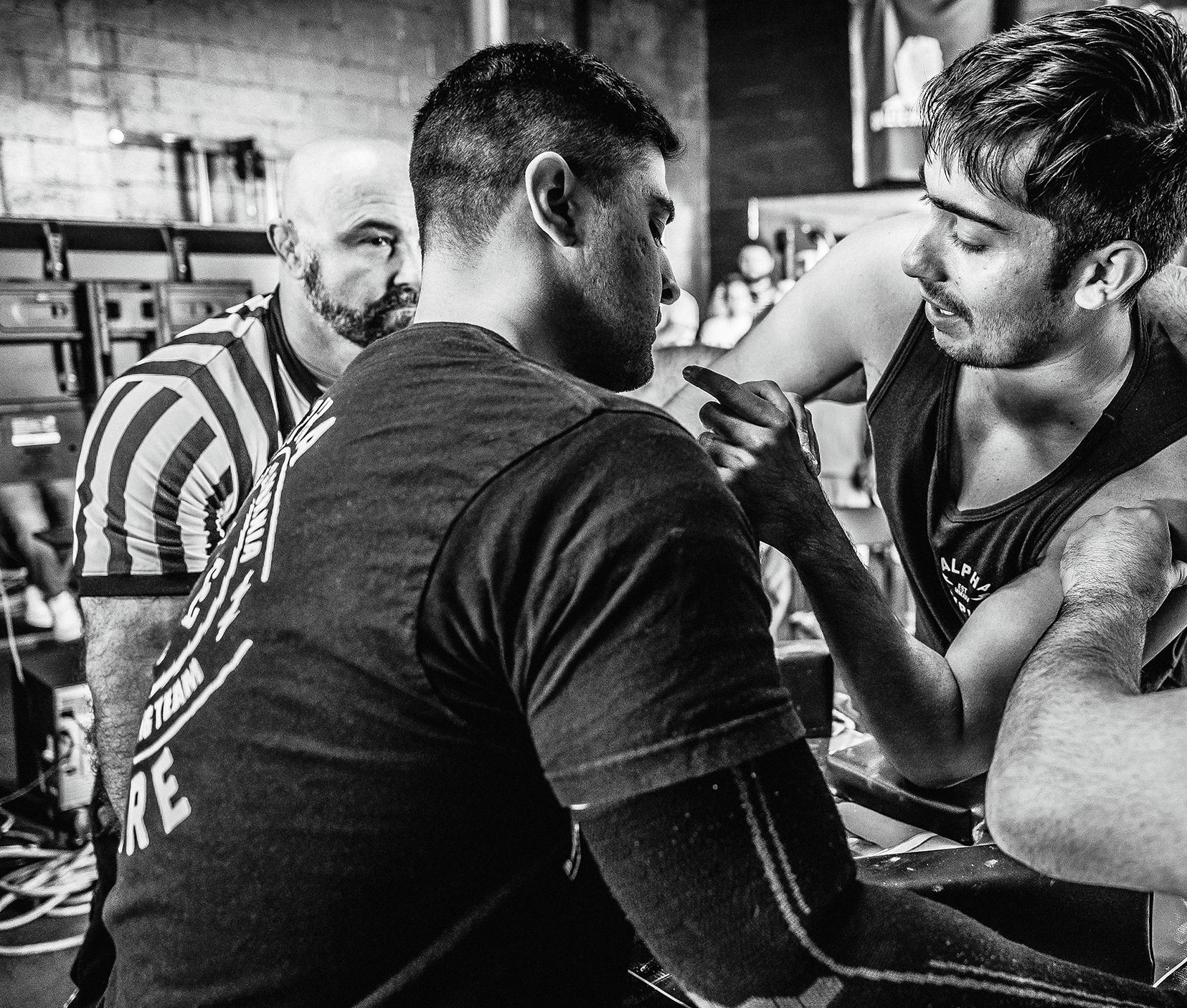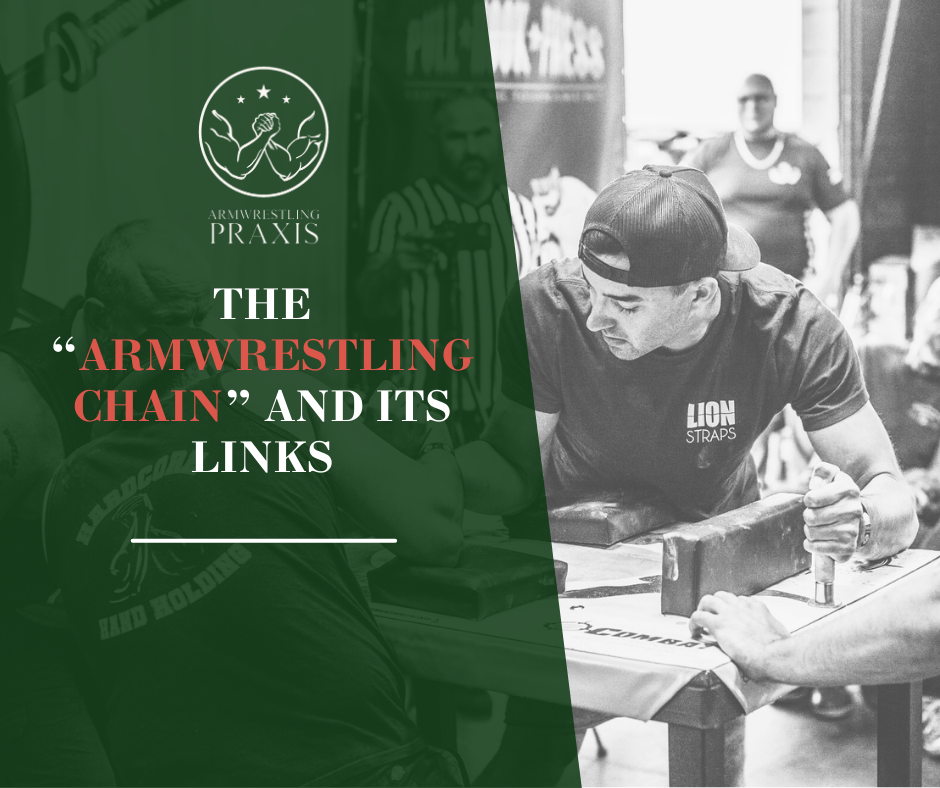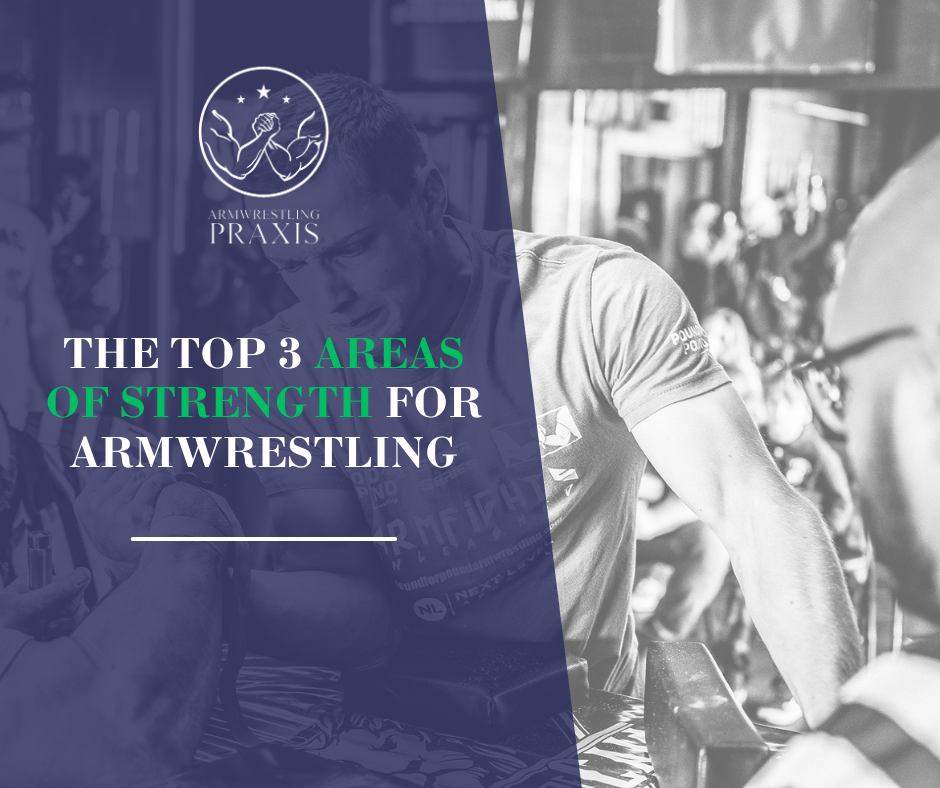Armwrestling is a dance.
A complex and subtle dance that starts with a high-powered movement of the hand and rapidly calls for the recruitment of the arm, back, chest, shoulders–and even the abdominals and lower body to an extent–all with the intention of pinning an opponent’s hand and securing victory.
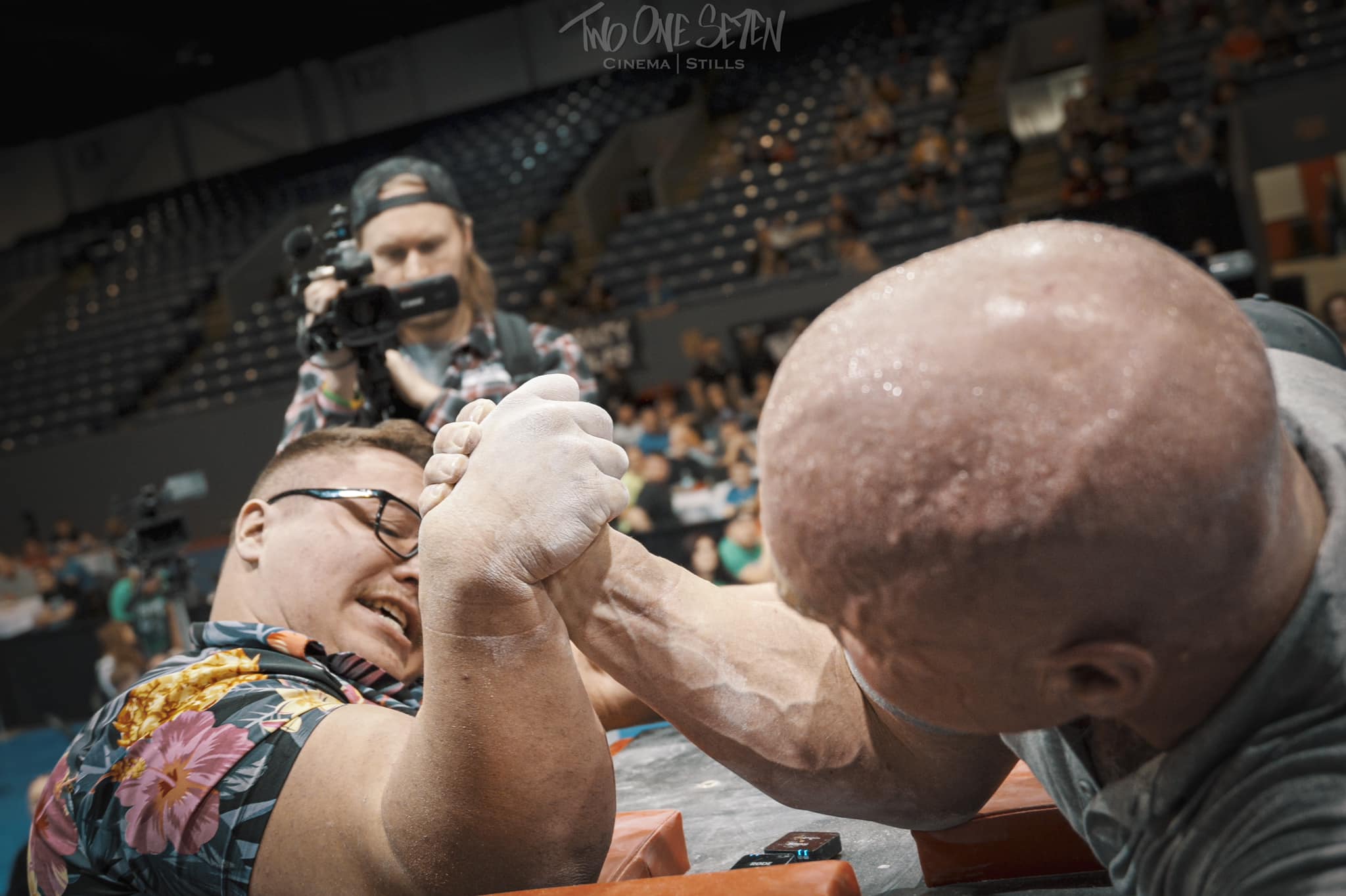 Photo taken by Brad Cook
Photo taken by Brad Cook
While the “dance” metaphor roughly captures the full-body participation required for armwrestling, we can use the better analogy of a “welded chain” given by James Retarides, a professional armwrestler & author of the book Strong Arm Tactics:
A key to becoming an effective professional armwrestler is in understanding that the body has to be like a welded chain without weak links. A knowledgeable professional armwrestler will find and exploit a weak link, whether it is as large as a bicep or as small as a pinky finger.
– Strong Arm Tactics: Training and Technique in Competitive Armwrestling (p. 70)
One of the first concepts that a beginner should seek to understand and implement on the table is the effective coordination of the links in this “armwrestling chain”, and so, it’ll be worth our time to discuss them in a bit more detail.
Three Major Links
So what exactly are these links?
Which parts of the body are involved? Which links are most important in the chain and which play a subsidiary role?
To answer those questions, we’ll take a look at 3 of the fundamental links in the Upper Body Chain:
- Hand Link
- Elbow Flexor Link
- Back & Chest Link
*The reason for focusing on the upper body is simply due to the fact that it is the primary workhorse in the sport of armwrestling, just as the lower body is for cycling or long-distance running. *
Hand Link
Our first link is the hand.
More accurately, this link is composed of the connective tissue and joints of the fingers, hand, and wrist and their corresponding muscle groups within the forearm.
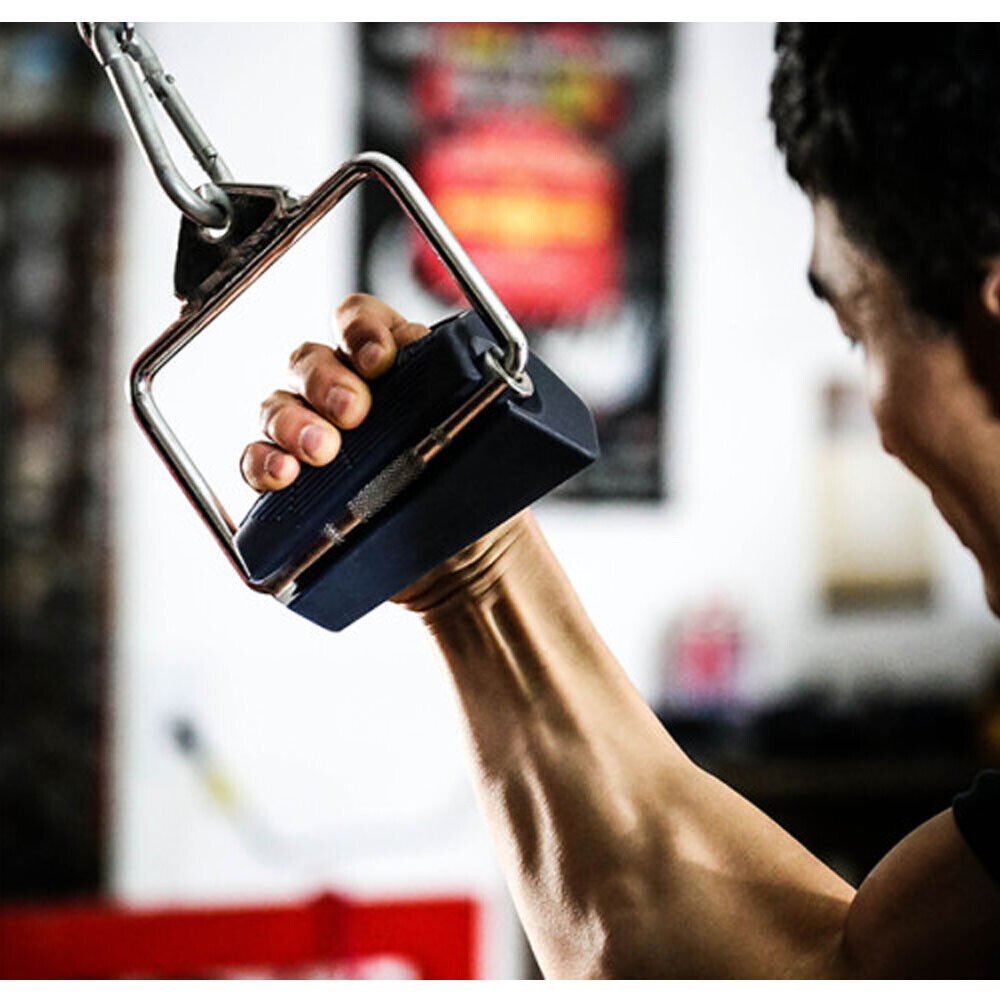 Artarm handle featured
Artarm handle featured
In order to armwrestle, we literally have to take a grip with our opponent’s hand and so, it’s no surprise that this link is the primary driver of the Upper Body Chain and that which allows the other two links to work at full capacity.
If your hand is the weak link, it’ll be the first thing that’s exploited by an intelligent opponent, and for that reason, should be prioritized in training and technique execution over everything else.
Elbow Flexor Link
Next up is the Elbow Flexor Link.
Your elbow flexors are the muscles which non-armwrestlers think of when they imagine what’s most important for armwrestling i.e. the brachioradialis, brachialis, and biceps.

In truth, these muscles serve a secondary role in the Upper Body Chain and even vary in relative importance with respect to each other i.e. the brachioradialis and brachialis can be more important than the biceps when it comes to a particular move.
The other thing worth pointing out is that the elbow flexors are working in a static, rather than dynamic, manner when we perform armwrestling movements.
To make things more clear, we are not necessarily using our elbow flexors to curl our opponent towards us like we would in a bicep curl, but instead are trying to maintain a locked, static position and resisting the tendency to have our arm “open up” while we are moving.
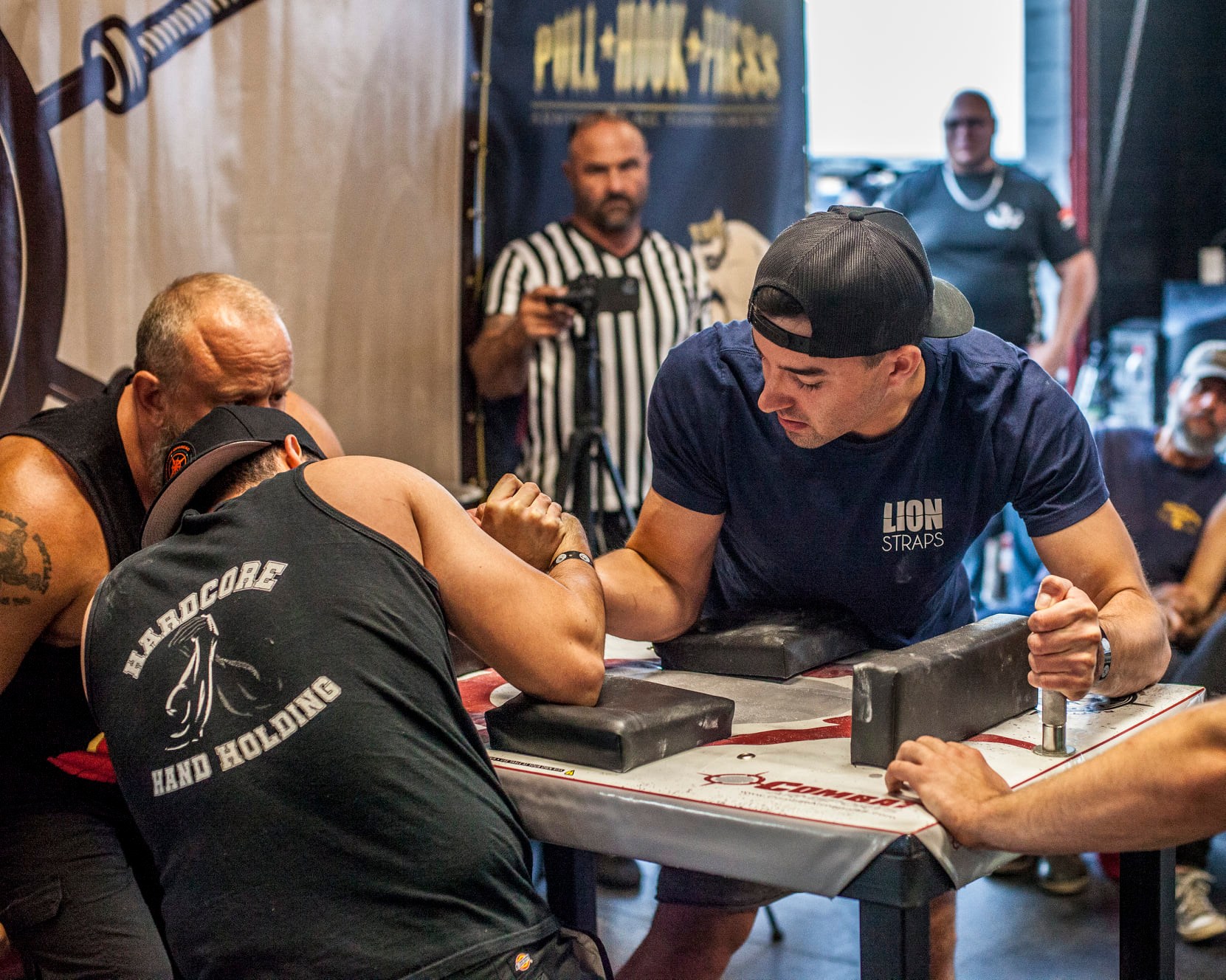 Photo taken by Ed Bedrosian
Photo taken by Ed Bedrosian
Ideally, you would never want this locked elbow angle to become extended, and there is definitely a place in an athlete’s training regimen for strengthening this static position and the overall development of the muscles which contribute to maintaining it.
Back & Chest Link
And finally, we arrive at the last component of the Upper Body Chain: The Back & Chest Link.
Several muscles make up this link, but the beefy latissimus dorsi and pectoralis major are the main parts that drive it and essentially act as an anchor for the entire Upper Body Chain (they also literally anchor your elbow to the elbow pad).
Although armwrestling is a hand and wrist dominant sport, it’s these massive muscle groups of the back and chest which are responsible for the large-scale, sweeping movements we see on the table.
Simply put, this link is capable of generating a tremendous amount of force and, when applied in conjunction with the other two, enable an armwrestler to fully access and coordinate their upper body musculature towards the execution of a particular move.
Although it’s difficult to rank the Back & Chest Link above the Hand, I’d say, depending on an armwrestler’s particular style, it can weigh in equal importance to the Elbow Flexor Link and even surpass it in many cases.
Harmonization
And so, we’ve arrived at a clearer picture of this “Armwrestling Chain” — specifically, the various links in the Upper Body Chain.
The purpose of this article was to identify which areas of the body most contribute to armwrestling motions and to emphasize that each of these areas need to be developed and strengthened in order to minimize the “weak links” in our chain.
I also wanted to highlight that the Hand Link is by far the most important and that your arm, back, and the rest are only as strong as this link.
 If you’re hand/wrist is the weak link, your big muscles won’t matter much
If you’re hand/wrist is the weak link, your big muscles won’t matter much
I want to be clear, however, that even though it makes sense to independently train these links in the gym, when it comes time to put our elbow on the table and armwrestle, we must properly coordinate the links and move our body as if it were a single unit – anything less means that we are neglecting some part of the body which could otherwise be assisting us.
Once we understand the importance of moving in a harmonized manner with all the links in our chain acting in sync, we’ll be able to lead the dance, access our full strength and secure victory.
